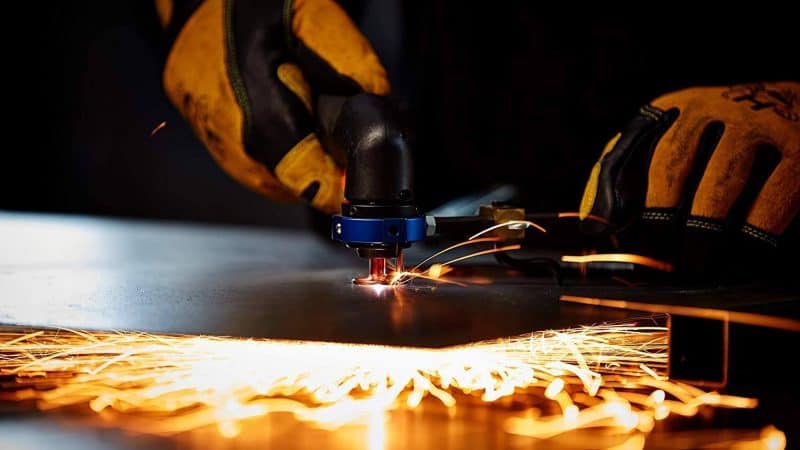Introduction
A plasma cutter is a very powerful and useful tool. It can be used for a variety of purposes, including cutting through metal, wood, and even glass. In this article, we will explore the top reasons you should get a plasma cutter. Plasma cutters are becoming increasingly popular because they offer a lot of advantages over traditional methods of cutting materials. For one, they are much faster and more precise. They also produce less heat and can be used on a variety of materials. If you are looking for a powerful and versatile cutting tool, then a plasma cutter is a great option. Here are the top reasons you should get one.
What is Plasma Cutting?
Plasma cutting is a process that uses a high-velocity stream of ionized gas to cut through conductive materials. The gas is passed through an electrode, which ionizes the gas and creates plasma. The plasma is then directed through a nozzle, which focuses the plasma stream and cuts through the material.
Plasma cutting is a fast and efficient way to cut through materials such as steel, stainless steel, aluminum, brass, and copper. It can also be used to cut through thicker materials such as plate steel, bar stock, or tubing. Plasma cutting is often used in welding applications because it can cut through thick materials quickly and easily. Additionally, plasma cutting produces less heat than other methods of cutting, which helps to prevent warping or damage to the material being cut.
Advantages of Plasma Cutting
When it comes to plasma cutting, there are many advantages that make this method of cutting superior to other methods. For starters, plasma cutting is much faster than traditional methods such as oxy-fuel cutting. This is because plasma cutting uses a high-velocity stream of ionized gas to cut through metal.
Another advantage of plasma cutting is that it can be used on a variety of different materials. This includes both thin and thick materials, making it a versatile tool for fabricators and manufacturers. Additionally, plasma cutting produces less heat than other methods, meaning there is less risk of warping or damaging the material being cut. Know more about Plasma cutter for sale here.
Different Types of Plasma Cutters
Different types of plasma cutters offer different features that can be beneficial for certain projects. Here is a breakdown of the different types of plasma cutters available on the market:
-Portable Plasma Cutters: Portable plasma cutters are great for those who need to move around with their cutter or don’t have a lot of space to work with. These models are typically smaller and lighter than other types of plasma cutters, making them easy to transport.
-Desktop Plasma Cutters: Desktop plasma cutters are larger and more powerful than portable models, making them ideal for heavy-duty projects. These models typically have a higher cutting speeds and can handle thicker materials.
-Industrial Plasma Cutters: Industrial plasma cutters are the most powerful type of cutter available. They’re designed for heavy-duty industrial applications and can handle even the thickest materials.
How to Use a Plasma Cutter
If you’ve never used a plasma cutter before, the prospect can be pretty intimidating. But once you get the hang of it, it’s actually quite easy! Here’s a quick guide on how to use a plasma cutter:
First, connect your plasma cutter to an air compressor and an electrical outlet. Make sure the air compressor is turned on and that there is enough air pressure.
Next, set the tip of the cutter against the metal you want to cut. You may need to adjust the height of the cutting tip depending on what kind of metal you’re cutting.
Once everything is in place, turn on the power switch and squeeze the trigger. The plasma arc will start automatically. Guide it along the line you want to cut, moving slowly and evenly.
Release the trigger when you’re done cutting, then turn off the power switch. Disconnect your plasma cutter from the air compressor and electrical outlet, then clean up any debris from your work area.
Safety Precautions
When it comes to operating a plasma cutter, safety is of the utmost importance. Here are some key safety precautions to keep in mind:
- Always wear proper eye and ear protection when using a plasma cutter.
- Never operate a plasma cutter in an enclosed space without adequate ventilation.
- Be aware of your surroundings and make sure there are no flammable materials nearby when using a plasma cutter.
- Keep your hands and body away from the cutting area while the plasma cutter is in operation.
- Never attempt to repair or modify a plasma cutters without proper training or guidance.
Conclusion
A plasma cutter is an incredibly versatile tool, and it’s a great addition to any workshop. Whether you’re a professional tradesman or a hobbyist, a plasma cutter can make your life easier and help you get the job done faster. If you’re still on the fence about whether or not to get one, hopefully this article has helped you make up your mind. Thanks for reading!

